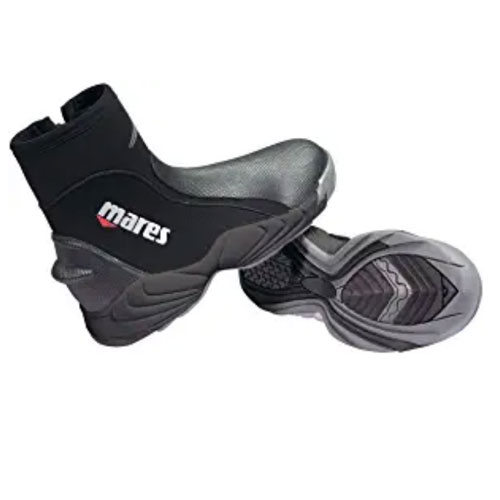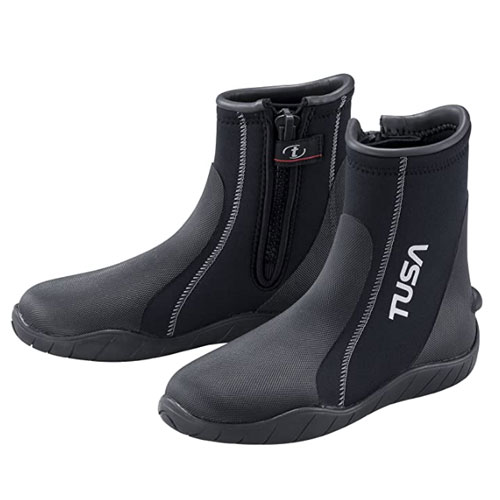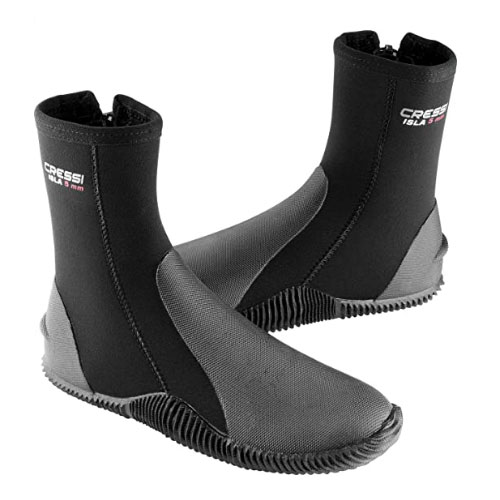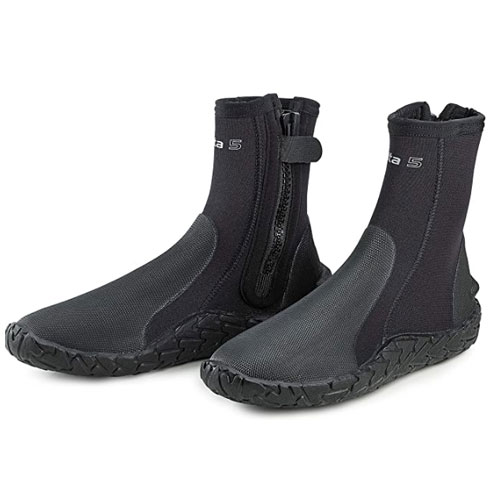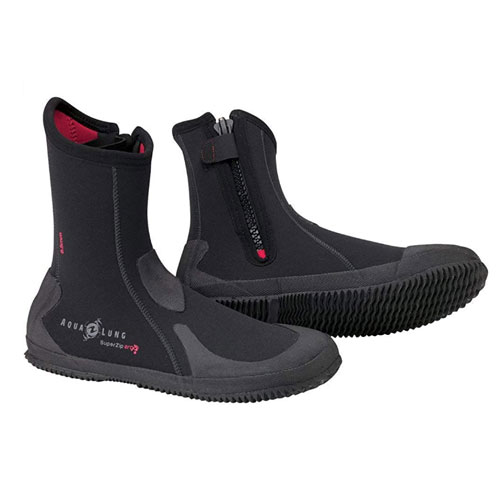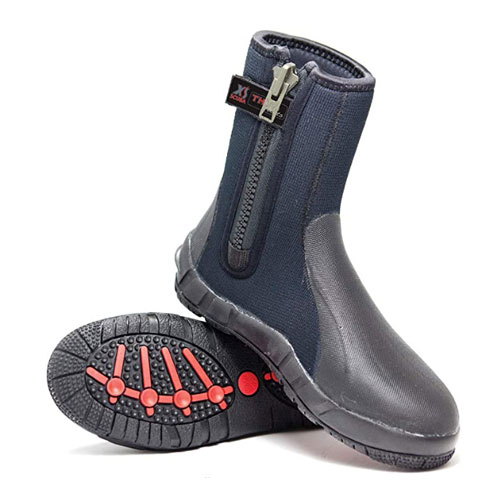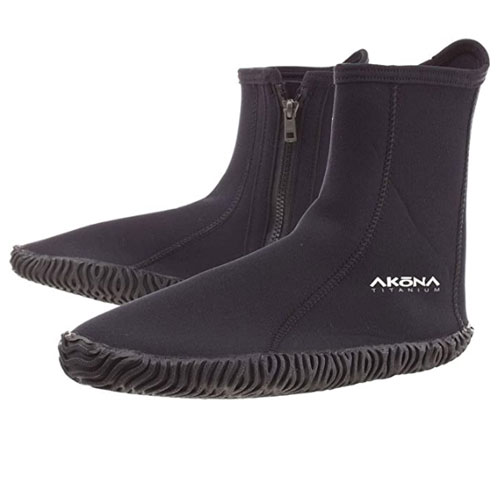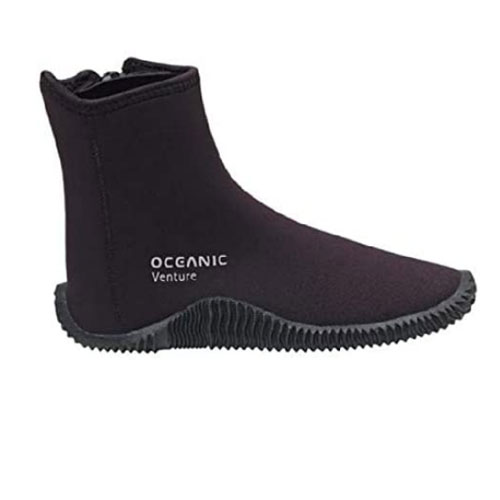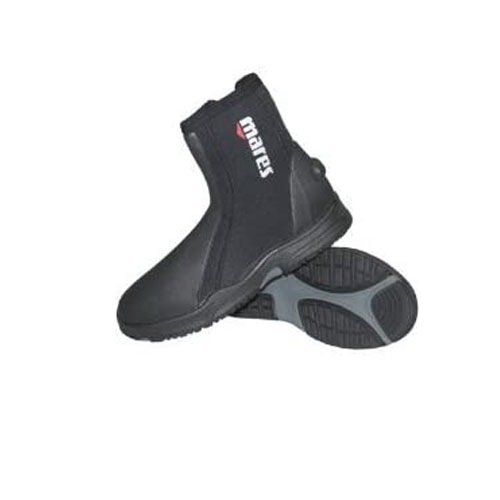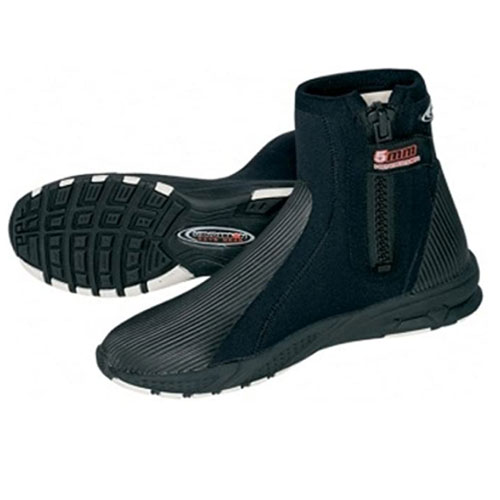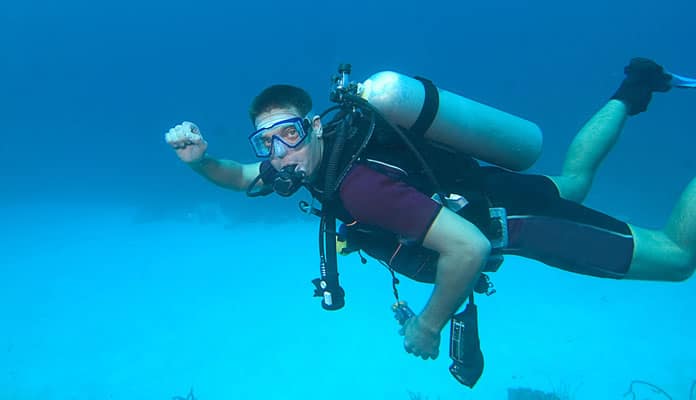
-
1.
-
2.
-
3.
-
4.
-
5.
Most scuba diving fins are open-heeled and are designed to be used with booties. Scuba fins are designed to provide more force and the open heel is better suited than a close heel design. Boots provide a more solid fit than the closed heel style used by snorkelers.
Boots will also protect your feet while on a dive boat or walking for a shore dive. Another important factor is like a wetsuit does for your core, they will help keep your feet warm but not dry.
Below are this year’s best dive boots on the market.
OUR TOP PICK
Mares Trilastic 5mm Sneaker Dive Boots
- What Makes These Boots Stand Out
- Hard sole
- Stretchable Neoprene
- Reinforced rubber toe and heel
- Zipped entry
Weight: 2.8 lbs
Thickness: 5 mm or 6.5 mm
Seams: Glued and sewn
EDITORS CHOICE
TUSA Imprex 5 mm Neoprene Dive Boots
- What Makes These Boots Stand Out
- Excellent traction
- Injection-molded sole
- Additional ankle support
- Zippered entry
Weight: 3 lbs
Thickness: 5 mm
Seams: Glued and sewn
ScubaPro Unisex 5mm Delta Boots
- Stand Out Features - Why We Love It
- Anti-slip non-marking treads
- Great fit for wide feet
- Limestone based neoprene
- Velcro latch
Weight: 5 lbs
Thickness: 5 mm
Seam: Glue and sewn
Aqua Lung 3mm Men’s Superzip Ergo Dive Boots
- What Makes These Boots Stand Out
- Ergonomic design
- Toe and heel padding
- Extra puncture protection
- Grooved sole
Weight: 2 lbs
Thickness: 3 mm, 5 mm, and 6.5 mm.
Seam: Glue and sewn
XS Scuba 8mm Thug Boots
- Stand Out Features - Why We Love It
- Durable seams
- Extra thick for cold water
- Protected heel and toe caps
- Marine bronze zipper
Weight: 3 lbs
Thickness: 8 mm
Seams: Glued and double-blind stitched
Akona Standard Boots
- Stand Out Features - Why We Love It
- No-frills design
- Lightweight design
- Non-slip grip
- Available in 3.5 and 6.5 mm thickness
Weight: 2 lbs
Thickness: 3 mm
Seam: Glued and blind stitched
Oceanic Venture 5.0 5mm Soft Sole Boots
- Stand Out Features - Why We Love It
- Rust-resistant zipper
- Minimal rubber sole
- Multiple thicknesses
- Warm
Weight: 1.9 lbs
Thickness: 3 mm, 5mm, and 6.5 mm
Seam: Flat, glued, and stitched
Mares FLEXA DS 5mm Neoprene Dive Boots
- What Makes These Boots Stand Out
- Drainage grooves
- Rust-resistant zipper
- Non-skid rubber on uppers
- Inner skirt
Weight: 4 lbs
Thickness: 5 mm
Seam: double glued and double blind stitched
Henderson Molded Sole Gripper Boots
- What Makes These Boots Stand Out
- Nylon II Thermoprene, Neoprene Material
- Thickness: 5mm
- Exclusive Henderson Molded Sole
- Great for any wet environment
Weight: 3.2 lbs
Thickness: 5mm
Seam: Glued and Sewn
- High-cut dive boots are your best bet for fins with large straps, as they can easily rub against your ankles and cause blisters with low-cut boots.
- Soft sole boots give the diver more flexibility in their feet, which is ideal for those who dive multiple times a day.
- Choosing dive boots in colors other than black can help you easily identify them on a crowded dive boat. Further, your dive buddy will be able to recognize you easier underwater.
![]()
Scuba Diving Expert
How To Choose The Best Dive Boots – Buying Guide
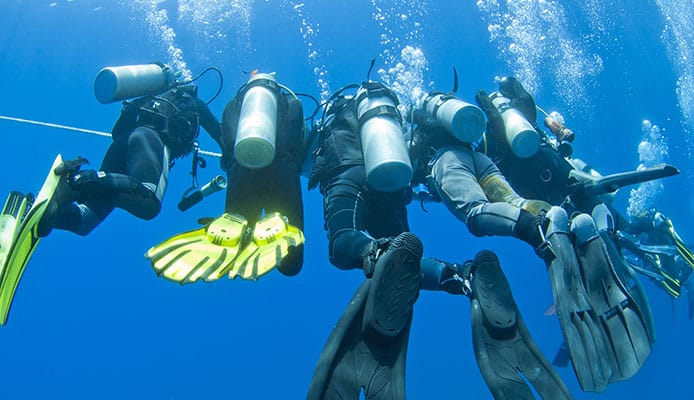
High Cut Or Low Cut
Much like any boot, you will buy, you have an option of high cut and low cut. Low cuts are also called slippers. The main difference between the two is that one offers more ankle protection. The high cut will give you more ankle protection, and you have less risk of twisting your ankle or straining it when you are on the move. It also helps those with a weak angle. If you are not walking very far with your scuba equipment, then a low-cut boot is fine.
When you are thinking about low cut vs. high cut, you also want to think about the comfort of the boot. A higher-cut boot will have more contact with your body. This may offer extra support and could keep the boot in place, but it could also cause more friction and rub against your ankle. A low-cut boot will also be smaller and lighter. Also, Low-cut boots provide little protection from heat loss, so are not available in cold water boots.
Hard Sole Or Soft Sole
A hard sole and a soft sole are exactly what you would imagine. One has a hard sole, and the other has a soft sole. If you are diving near the shore, then it is likely that you are walking across the beach, or another area, to get to the water. When you get to the water, you are going to be walking through it, possibly over rocks. For this type of scuba diving, you are best off with a hard sole to protect your feet.
If you are taking a boat out to deeper waters, where there is minimal chance of stepping on rocks or other surfaces which could damage your foot, then a soft sole will be fine. Soft soles are more flexible than hard soles. They give a more comfortable fit, and they are also great if you have wide feet or feet with an unusual shape.
Size
The size of your diving boot is very important. Possibly the most important factor when you are making your choice. If you get a boot that is too small, then it is going to be constructive and uncomfortable. If you buy a boot that is too big, then it may be loose and chafe you. It may also fall off in the water, and you can lose it completely.
When you are buying the best dive boots, you should ensure that you know your size. If you do not, then you can visit a diving store and try some on. They should be the same size as your shoe size, but the sizes can vary. The diving boot sizes also do not come in half sizes. So, if you fit a shoe which is a half size, then you should round up. It is also hard to find women’s diving boots. Often women will buy men’s diving boots. If this is the case, then you should round down by a size or two.
Your diving boot should fit comfortably and should not be too loose or too tight. If you have diving fins, then you should always account for that when you are choosing your diving boots. Make sure that the diving fins are compatible with the boots you are buying.
Arch Support
When you wear shoes, you may wear ones that come with additional arch support or you may add arch support to your shoes. If this is the case, then you should look for dive boots with good arch support. You will not be doing as much walking as you would do in your regular shoes, but you will be carrying more weight.
Many dive boots come with arch support if you need that extra support. You do not want to get into the water with sore feet. If you want to use your arch support, then you should consult a medical professional to ensure that you have the best arch support for diving and that the arch supports will fit with the diving boot. You may have to order one size up if you are adding supports to the sole.
You might also like:: Scuba Gear Packages
Heel Counter
The part at the back of the boot is known as the heel counter. This is the stiff part that is responsible for protecting your heel and your ankle. The counter at the back of the boot should be solid.
The other thing that the heel counter should do is protect your ankle from rolling. When you are walking, the heel support should give enough support to your ankle, that if you do land on the ground awkwardly, your ankle should not roll to the side. As well as ensuring your ankle does not roll, the heel support should also take a lot of the stress off of your ankle.
Good dive boots will have great heel support which will ensure you are not subjected to any stress or strain.
Extras
One recommendation from us is to look for a pair of boots that have a Velcro fastener over the zip (if the boot has a zip). You want a zip that is easy to use, and one which goes up and down easily, but you do not want that same zip to go down when you are in the water. A Velcro strap will seal across the zip and stop it from going down when you do not want it to.
Decide on what you need in a dive boot, and then make your choice based on those requirements.
FAQs
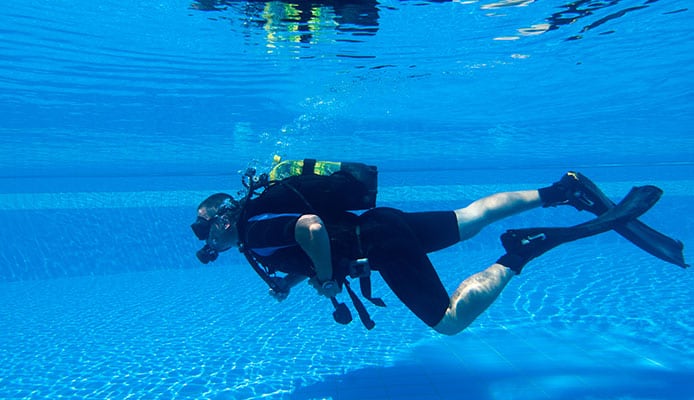
Q: Why Do I Need Diving Boots?
There are three main reasons to wear a dive boot. First, a dive boot helps protect your feet while using open heel fins. Scuba divers need a more powerful fin than snorkelers. An open heel fin allows you to transfer the power of your legs to the fins better than a close heel fin. The boot helps ensure a tight but comfortable fit between your body and the fin.
Ever sit in a bathtub too long and feel cold, in water that is just a few degrees cooler than you started? It is not all the fault of the water becoming cooler. Any water cooler than your body temperature will draw heat from your body. The same happens when you are diving, and the feet are one of the first places to lose heat. A pair of dive boots will help slow that heat loss.
As the old song goes, these boots are made for walking. You may be shore diving or diving from a boat, but there will be walking involved. A good dive boot will help keep you from slipping and get over rough ground.
Q: What Are Diving Boots Made Of?
You can find diving boots made from all sorts of materials, but like modern wetsuits, the most common material is neoprene in the uppers. The outer sole is generally some type of rubber. Often the rubber will extend to provide support for the toes and heels. Many dive boots will have zippers. These will be of heavy plastic or nylon. Top-grade boots may have a marine brass zipper.
Q: Should I Zip Or Not?
Most of the boots on the market have zips, but there is a trend of zipperless boots emerging thanks to the new materials which are being used. We can foresee that as time passes, more and more boots are going to be zipper-less, but the question is, which should you choose?
With the advances in materials, such as high-stretch neoprene, and the improvements in construction, there is less of a need to use zips to fasten your foot in a boot. The stretchy boots allow you to put your foot in the boot, without having to unzip and open them. The material stretches as your foot passes through it, and then contracts when your foot is in, to conform to the shape of your foot. But, which is better?
It is a matter of choice. With a zipper, there is the chance of it breaking. A zipper can collect small particles, such as sand, so you need to clean it well after each dive. There is the additional risk that a zipper can come down when you are diving. However, many boots have a Velcro cover to hold them in place.
A zipper-less boot may not fit your ankle as well as a zippered boot. The material cannot be made too tight on the ankle, and for some people, the fit is loose. Over time, the elasticity of the boot can begin to wear. The fit may become looser, the more you wear it.
Globo Surf Overview
Wearing scuba boots during your dive will not only keep your feet warm but will also keep you safe. Walk to the water with your scuba diving computer on and navigate slippery rocks with ease as the sole on these boots will provide the cushioning and tread you need.
More Scuba Reviews:
- Dive Camera
- Dive Light
- Full Face Scuba Mask
- Dive Watches Under 200
- Dive Watch Under 1000
- Dive Watches Under 500
- Scuba Mask With Purge Valve
- Underwater Scooter
- Scuba Regulator
- Rebreather
More Boots Reviews:
Do you dive with a pair of boots on our list? Let us know how you like it in the comment section below.



